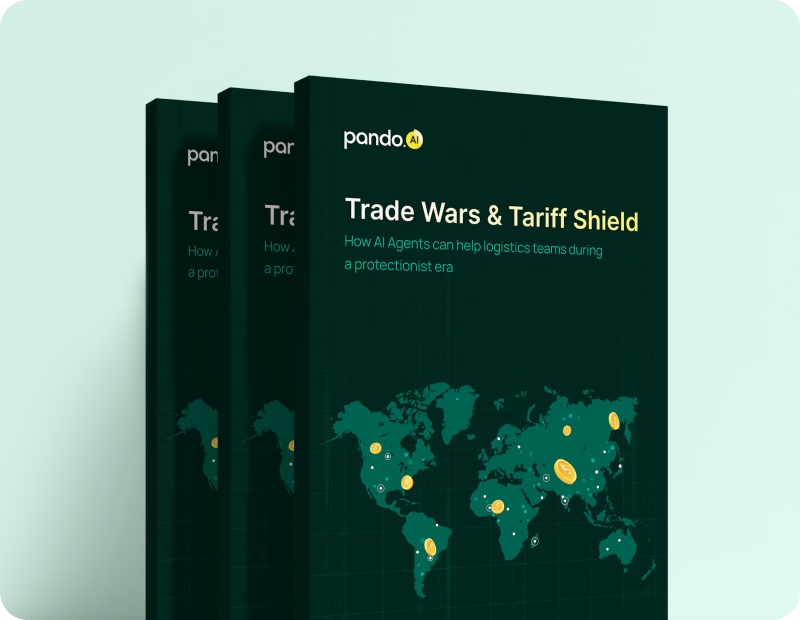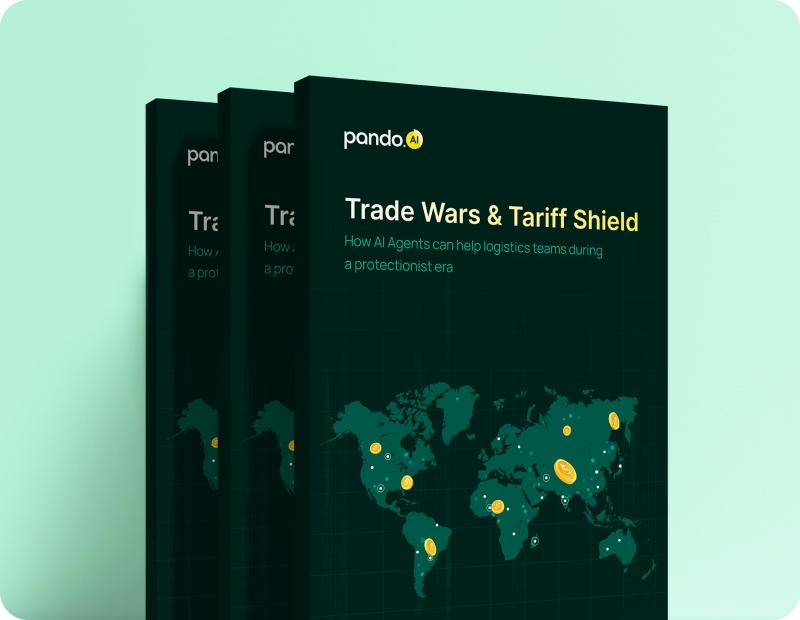-
Products Products
- Industry
- Initiatives
- Resources
- Company
- Book a demo

Before you go: Logistics leaders just dropped the truth on AI
The State of AI in Logistics 2025 is here — no hype, just real conversations and raw insights.
Top 5 use-cases for autonomous freight sourcing and procurement
From efficiency to sustainability, discover how automated systems are transforming the future of freight management.
Published on December 14, 2023 • 5 mins read
Durga Pratiha

From efficiency to sustainability, discover how automated systems are transforming the future of freight management.
Autonomous freight procurement isn't just a tweak to the system; it's a fundamental shift from the traditional approaches. This groundbreaking approach is revolutionizing supply chain management by using advanced technologies like AI in procurement, machine learning, and real-time analytics to automate and optimize freight operations. It marks a new era of autonomous sourcing, saying goodbye to static, manual processes. Now, logistics professionals embrace a dynamic setup where algorithms and data-driven insights handle the complexities of supply chains on their path to autonomy.
The impact of this transformation is more than just an incremental improvement; it's significant. You gain increased efficiency, save substantial costs, and make better decisions. In this blog post, we'll delve into the top five use cases of autonomous freight procurement and explore how these applications are revolutionizing the logistics landscape.
1. Dynamic freight sourcing
Static freight contracts that fail to consider market fluctuations pose a substantial challenge for businesses. However, dynamic freight sourcing emerges as a potent solution, enabling you to assert control over your freight procurement process. Equipped with advanced algorithms and artificial intelligence, your system adeptly responds to shifts in supply and demand, fuel prices, and other critical factors to dynamically recommend a duration of freight contracts, spot vs long-term buys etc.
This real-time adjustment ensures that you're not stuck in static contracts; instead, you engage in a flexible and adaptive pricing model. This agility becomes invaluable in a market where variables can change rapidly, giving you better control over costs and resource optimization.
Moreover, dynamic rate procurement enhances your decision-making. You can make informed choices on carriers and routes based on the most current data while adjusting your pricing strategies in response to market trends through rate forecasting capabilities. Ultimately, this use case epitomizes the transformative power of autonomous freight, ushering in an era where your responsiveness, efficiency, and adaptability set the benchmark in the logistics space.
2. Contract automation
If you run a business and need to ship your products, automated contract negotiation is a big deal. This technology enables autonomous procurement of contracts, allowing terms to be adjusted without manual effort. It looks at how well carriers have done before and what the market rates are to decide what's best for you. For example, if a carrier has a good history and always delivers on time, the system might get you a good deal or opt for more flexible delivery times.
Let's say you regularly ship products that are in high demand during certain seasons. The automated system, armed with transportation analytics use cases, can adjust your contracts to secure capacity or negotiate shorter delivery times during peak seasons. If the demand for your goods is skyrocketing, the technology might negotiate shorter delivery times to meet customer expectations or secure additional capacity to accommodate the increased load.
On the flip side, if the market is slow, the system can renegotiate contracts to optimize cost efficiency. It might suggest consolidating shipments, choosing more cost-effective routes, or even negotiating lower rates during off-peak times.
3. Intelligent scenario planning
Making the right carrier selection is critical to ensure the smooth operation of your business, and autonomous freight procurement streamlines this process to make it effortless for you. The interesting aspect of this technology is that it helps you choose the best carrier automatically. So, how does it work? Well, the system looks at different scenarios, like past performance and market conditions, to make sure you pick the right carrier for each shipment lane or route or consolidating shipment lanes. Say you're sending out a big batch of products, and you want to make sure they get to your customers on time. The autonomous freight procurement system considers the performance history of carriers to predict which one is most likely to deliver on schedule.
Now, think about unexpected situations, like bad weather or road closures. The system takes these into account too. If there's a potential issue, it helps you plan by suggesting alternative routes or carriers that can handle the challenges, ensuring your shipments stay on track. The scenario-planning aspect is like having a smart assistant that thinks ahead for you. It's not just about picking a carrier but making sure your products reach their destination smoothly, no matter what surprises might come your way.
4. Streamlined spot buying
Spot buying with autonomous freight procurement is the hassle-free solution for quickly moving your products. By leveraging the spot market, you can find available carriers for immediate, one-off shipments and make decisions quickly to avoid unnecessary delays. With autonomous freight procurement, you can streamline the process even further by taking advantage of sophisticated algorithms and real-time data analysis to find the best available options for your shipment. The system considers a range of factors, from current market rates to carrier availability and your specific shipment requirements, so you can rest assured that you're getting the best possible service.
It's like having a super-fast, efficient assistant that instantly connects you with the right carrier at the right time. No need for lengthy negotiations or complicated paperwork; the system streamlines the entire spot-buying process, saving you time and ensuring you get the best deal for that shipment. Whether it's a last-minute order or a sudden spike in demand, spot market procurement with autonomous freight procurement lets you adapt quickly. It's a flexible solution that empowers you to meet unexpected shipping needs without stress.
5. Post-auction analysis
If you're looking for a comprehensive solution to optimize your logistics spend and gain a competitive edge in the market, post-auction analysis is an invaluable tool. With autonomous freight procurement, you can automatically analyze a huge amount of data to reveal insights that you might have missed. It dissects carrier performance, identifies cost-saving opportunities, and pinpoints areas where you can optimize your logistics spend.
The post-auction analysis offered by autonomous freight procurement is far more detailed than just comparing bids. It delves deeper into factors like carrier reliability, on-time delivery rates, and hidden fees. By understanding these nuances, you can make informed decisions about your future freight needs, choosing the carriers that provide not only the cheapest price but also the best overall value. But that's not all - there are even more benefits to post-auction analysis. It helps you track trends and identify patterns in your freight spend, allowing you to predict future costs with greater accuracy and develop a more strategic approach to procurement.
Leveraging autonomous freight procurement for success
In conclusion, the five procurement use cases we've discussed—dynamic freight sourcing, contract automation, scenario planning, streamlined spot buying, and post-auction analysis—demonstrate the broad benefits of autonomous procurement for manufacturers and retailers worldwide. These use cases contribute to a more efficient, agile, and cost-effective supply chain, helping you reduce operational costs, optimize resources, and improve profitability. By leveraging these innovations, you can automate your freight procurement process, eliminate human error, and make data-driven decisions to stay ahead in today's fast-paced logistics landscape.
Subscribe to Pando blog and Crossroads newsletter now!
Stay up to date with the latest logistics, transportation, and supply chain tips and news.
Subscribe Here!

Related blogs
Freight procurement: Meaning, benefits and best practices for optimized logistics












